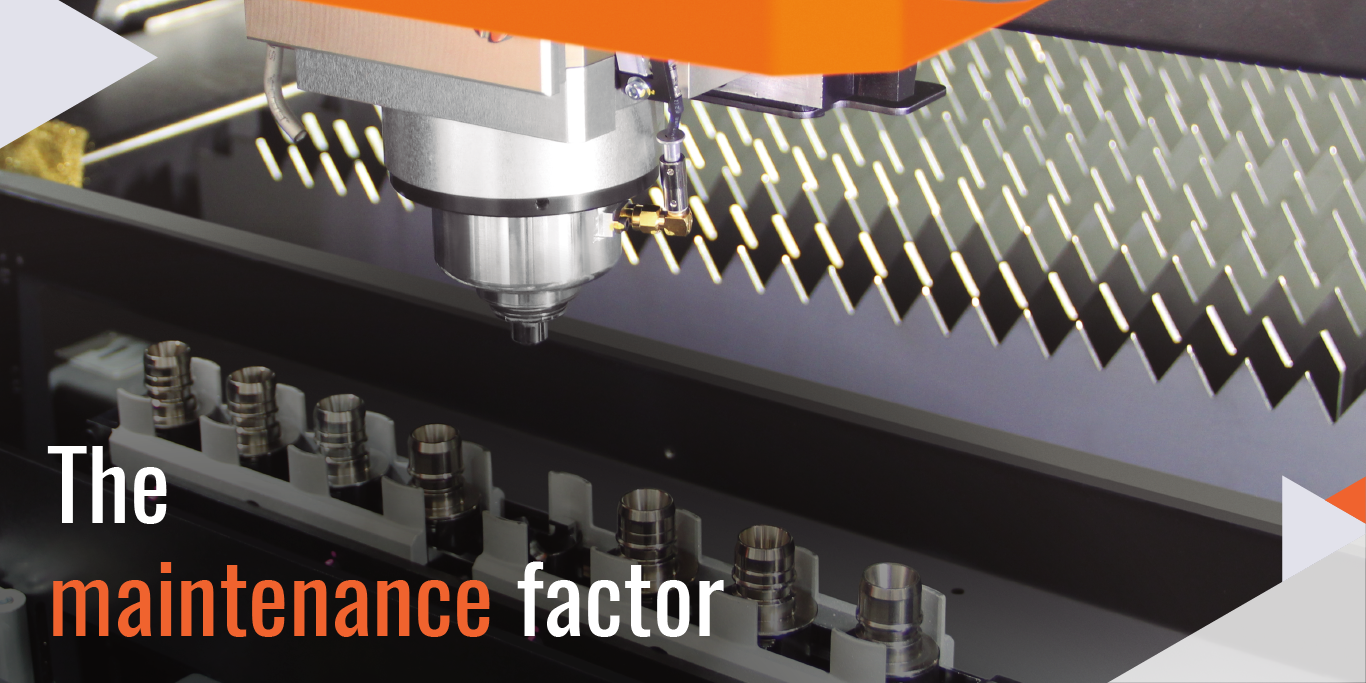
Laser maintenance schedules are an important factor in the choice of a laser machine. Ian Goodwin, from Mazak’s laser service team, outlines the service and inspection process and contrasts the difference between maintaining a CO2 and a fibre laser machine.
The increasing popularity of fibre lasers is being driven by three key criteria. Very often the focus is on the first two, namely running costs, specifically electricity, and, secondly, the potential for increased productivity, with cutting times circa 5-6 times faster when working with a thin sheet.
However, the third key criteria, namely maintenance, is equally as important, particularly when laser users begin to look at the hard numbers.
To understand the cost differential between servicing a CO2 laser and a fibre, it is important to first understand what is involved.
Servicing a CO2 laser is, to put it simply, a big and involved job, often requiring a service engineer to be on site for up to three days at a time.
The reason is that a CO2 laser is a much more technically complex machine, each equipped with between four and six optics. Over time, the nature of the laser process can produce contaminants which then attach themselves to the optics, resulting in the need for cleaning as part of a maintenance process.
A CO2 machine has an external and internal mirror system, both of which require cleaning. Mazak’s OPTIPLEX 2.5kW, for example, has six external and four internal optics, whilst the OPTIPLEX 4kW is equipped with six external and six internal optics.
The key issue is that, once a mirror is disturbed during the laser maintenance process, it needs to be realigned using a cross-target. Each mirror must be realigned in sequence, which requires technical experience and can be very time-consuming. Any loss of power from the resonator will require going back to check the alignment of each mirror until the non-aligned mirror can be identified and brought into line.
In addition, the service engineer will use a power probe to check the power of the beam and also feedback voltages will be checked.
Once the mirrors and the head have been checked and realigned, the CO2 laser will need its oil checked and drained. This process will take place on both the turbo and the vacuum pump. In addition, the filtration system and compressed air system will both need to be cleaned in order to minimise contamination.
Our laser maintenance advice is that older machines require a service every 12 months or every 2,000 operational hours. Newer CO2 machines can be run with a longer laser maintenance schedule of circa 4,000 hours.
However, a word of warning. It is important that shift patterns are taken into account when devising laser maintenance schedules. A laser cutting machine being used 24/7 will need a shorter interval between services and this needs to be factored into both maintenance costs and scheduled laser downtime.
In comparison, laser maintenance for fibre laser machines is much less involved and quicker process. A fibre laser has fewer parts to maintain, which means less time and a lower cost.
For example, a fibre laser has no vacuum pump, no turbo blower and no internal optics that need cleaning. In fact, very often the only servicing that is required is to change the filters.
As a result, the service and inspection time required for fibre lasers is reduced considerably, typically circa 1.5 hours compared to 2-3 days for a CO2 machine.
What’s more, this doesn’t take into account the potential saving on machine downtime. A machine that is down for 1.5 hours is clearly going to be more productive than one that is down for 2-3 days.
Again, laser users need to be careful to balance the service intervals based on shift patterns, adjusting intervals for those machines working long operational hours.
Overall, my advice for laser users to take into account the whole life cost of the machine, including laser maintenance costs and machine downtime, not just the initial purchase price.
